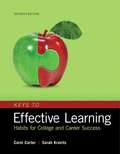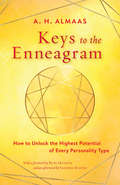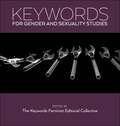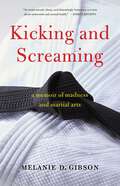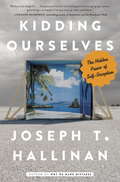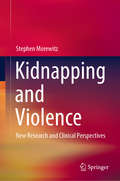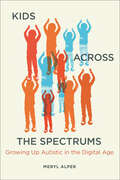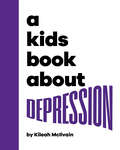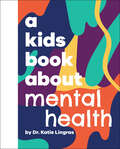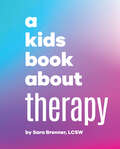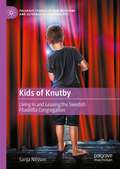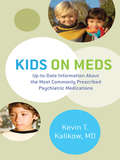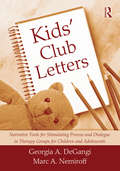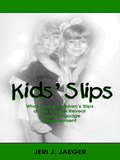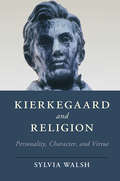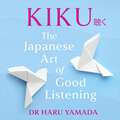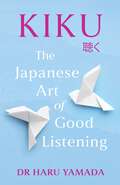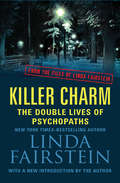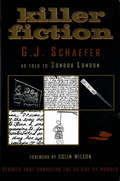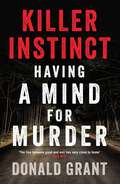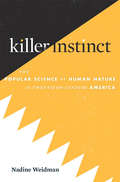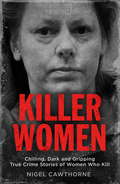- Table View
- List View
Keys to Effective Learning: Habits for College and Career Success
by Carol Carter; Sarah Lyman KravitsKeys to Effective Learning nurtures these skills in students entering college by focusing on building accountability, teamwork, and critical/creative thinking skills that can be applied to any academic or workplace setting.
Keys to the Enneagram: How to Unlock the Highest Potential of Every Personality Type
by A. H. AlmaasMore than just a tool to diagnose your personality type, the Enneagram was originally developed to help people find the ultimate freedom of consciousness and achieve spiritual liberation. A. H. Almaas brings us back to this original mission as he shares the essential keys that will help readers break free from the limitations and distortions of each type&’s fixation—and to express their true spiritual nature in everyday life.
Keywords for Gender and Sexuality Studies (Keywords #13)
by Mishuana Goeman Aimee Bahng Kyla Wazana Tompkins Amber Jamilla Musser Aren Z. Aizura Karma R. ChávezIntroduces key terms, debates, and histories for feminist studies in gender and sexualityKeywords for Gender and Sexuality Studies introduces readers to a set of terms that will aid them in understanding the central methodological and political stakes currently energizing feminist and queer studies. The volume deepens the analyses of this field by highlighting justice-oriented intersectional movements and foregrounding Black, Indigenous, and women of color feminisms; transnational feminisms; queer of color critique; trans, disability, and fat studies; feminist science studies; and critiques of the state, law, and prisons that emerge from queer and women of color justice movements. Many of the keywords featured in this publication call attention to the fundamental assumptions of humanism’s political and intellectual debates—from the racialized contours of property and ownership to eugenicist discourses of improvement and development. Interventions to these frameworks arise out of queer, feminist and anti-racist engagements with matter and ecology as well as efforts to imagine forms of relationality beyond settler colonial and imperialist epistemologiesReflecting the interdisciplinary breadth of the field, this collection of seventy essays by scholars across the social sciences and the humanities weaves together methodologies from science and technology studies, affect theory, and queer historiographies, as well as Black Studies, Latinx Studies, Asian American, and Indigenous Studies. Taken together, these essays move alongside the distinct histories and myriad solidarities of the fields to construct the much awaited Keywords for Gender and Sexuality Studies.
Kicking and Screaming: A Memoir of Madness and Martial Arts
by Melanie D GibsonMelanie Gibson was an independent woman with a good job, multiple college degrees, and a condo in the trendy part of town. She also had a few mental illnesses, a minor substance abuse problem, and rotten relationship skills. She was a high-functioning crazy who needed a good kick in the pants, literally and metaphorically.In early 2013, as a last desperate means to save her sanity, Melanie turned to a nearly forgotten childhood activity: the Korean martial art of taekwondo. As if the universe were listening, she discovered her West Texas childhood taekwondo instructors’ Grandmaster operated a taekwondo school a few miles from her home in Fort Worth, Texas—and she decided to start her training over as a white belt.In taekwondo, Melanie felt like she had a fresh start in more ways than one. She found an inner peace she’d never known before, a sense of community, a newfound confidence, and a positive outlook on life. The kicking and screaming she was doing in class quieted the long-term kicking and screaming in her mind. Funny and frank, Kicking and Screaming: A Memoir of Madness and Martial Arts is the story of Melanie’s life-changing journey from troubled, lost soul to confident taekwondo black belt.
Kidding Ourselves
by Joseph T. HallinanFrom the Pulitzer Prize-winning journalist and author of Why We Make Mistakes, an illuminating exploration of human beings' astonishing ability to deceive themselves. To one degree or another, we all misjudge reality. Our perception--of ourselves and the world around us--is much more malleable than we realize. This self-deception influences every major aspect of our personal and social life, including relationships, sex, politics, careers, and health. In Kidding Ourselves, Joseph Hallinan offers a nuts-and-bolts look at how this penchant shapes our everyday lives, from the medicines we take to the decisions we make. It shows, for instance, just how much the power of many modern medicines, particularly anti-depressants and painkillers, is largely in our heads. Placebos in modern-day life extend beyond hospitals, to fake thermostats and "elevator close" buttons that don't really work...but give the perception that they do. Kidding Ourselves brings together a variety of subjects, linking seemingly unrelated ideas in fascinating and unexpected ways. And ultimately, it shows that deceiving ourselves is not always negative or foolish. As increasing numbers of researchers are discovering, it can be incredibly useful, providing us with the resilience we need to persevere, in the boardroom, bedroom, and beyond. Provocative, accessible, and easily applicable to multiple facets of everyday life, Kidding Ourselves is an extraordinary new exploration of our mind's flexibility.
Kidnapping and Violence: New Research and Clinical Perspectives
by Stephen MorewitzThis book analyzes kidnapping in various forms and from various perspectives. First it argues that kidnapping, including the threat of kidnapping, reflects a breakdown in the mechanisms of social control in society. This volume also discusses the ways governments and para-military and terrorist groups employ kidnappings as part of their foreign and domestic policy. This analysis evaluates why and under what conditions governments, para-military and terrorist groups decide to abduct individuals and groups. It emphasizes how individuals, groups, and governments employ abductions to achieve their psychological, social, religious, and political objectives. This analysis also examines the ways in which cultural traditions in different societies emerge to foster behaviors such as bride abductions. Moreover, this book addresses the extent to which social change modifies these cultural patterns.Suitable for students and researchers, mental health practitioners, and law enforcement, this volume is a unique analysis of our contemporary understanding of kidnapping and violence, and the social, psychological, political, and cultural motivations for such an act.
Kids Across the Spectrums: Growing Up Autistic in the Digital Age
by Meryl AlperAn ethnographic study of diverse children on the autism spectrum and the role of media and technology in their everyday lives.In spite of widespread assumptions that young people on the autism spectrum have a &“natural&” attraction to technology—a premise that leads to significant speculation about how media helps or harms them—relatively little research actually exists about their everyday tech use. In Kids Across the Spectrums, Meryl Alper fills this gap with the first book-length ethnography of the digital lives of autistic young people. Based on research with more than sixty neurodivergent children from an array of racial, ethnic, and socioeconomic backgrounds, Kids Across the Spectrums delves into three overlapping areas of their media usage: cultural belonging, social relationships, and physical embodiment. Alper&’s work demonstrates that what autistic youth do with technology is not radically different from their non-autistic peers. However, significant social and health inequalities—including limited recreational programs, unsafe neighborhoods, and challenges obtaining appropriate therapeutic services—spill over into their media habits. With an emphasis on what autistic children bring to media as opposed to what they supposedly lack socially, Alper argues that their relationships do not exist outside of how communication technologies affect sociality, nor beyond the boundaries of stigmatization and society writ large. Finally, she offers practical suggestions for the education, healthcare, and technology sectors to promote equity, inclusion, access, and justice for autistic kids at home, at school, and in their communities.
Kids Book About Depression, A (A Kids Book)
by Kileah McilvainA personal story of depression and how the author found help.This is a book about depression. It doesn't shy away from the complexities of depression or what getting help might look like. It gives an honest perspective into what depression feels like, what life looks like with it, and the hope that comes with being known and being loved through it.
Kids Book About Mental Health, A (A Kids Book)
by Katie LingrasIt's important that we all learn to care for and promote our mental health!What is mental health? Did you know it's something we all have? It's true! A person's mental health simply means how they understand their own thoughts, feelings, actions, and interactions with others. Sometimes our mental health is positive, and other times it's not. Learning we all have mental health reminds us that we aren't alone. We're so grateful you're here!
Kids Book About Therapy, A (A Kids Book)
by Sara BrennerTherapy is for everyone, and it's never too early (or too late) to start.Therapy isn't just for problems or when something goes wrong. It's for your everyday mental health and is something you can tap into for well-being now and for the rest of your life. This book shows kids mental health therapy can be fun and helps underline its necessity.
Kids of Knutby: Living in and Leaving the Swedish Filadelfia Congregation (Palgrave Studies in New Religions and Alternative Spiritualities)
by Sanja NilssonThis book tells the story of the children and youth of the charismatic new religious commune Knutby Filadelfia in Sweden. It recounts the history of the congregation, which started out as a part of the Swedish Pentecostalmovement in 1921. In the 1990s, it developed into a new religion, when the congregation’s female pastor embraced the role of the Bride of Christ. The congregation became widely known in 2004 when one of its members was murdered by another member, the latter claiming to have been acting on orders from God. In 2018, the congregation dissolved after a few years of internal crisis.Sanja Nilsson provides rich empirical analysis of archival material and interviews with the congregation’s children and youth. The young informants’ personal perspectives on their own childhoods encompass narratives from their time inside the congregation, when they identified as members of a stigmatizedminority religion, as well as from the time after the dissolution of the group, when they identified asdefectors from what they came to view as a sectarian milieu.This work offers a comprehensive insight into the Knutby Filadelfia congregation, a group, that although notoriously charted by the media, has been hitherto unexplored by academics. It adds to the growing field of studies concerned with childhoods within new religions and expounds the dynamics of the defection process from the rarely applied perspective of children and youth themselves.
Kids on Meds: Up-to-Date Information About the Most Commonly Prescribed Psychiatric Medications
by Kevin T. KalikowA popular guide for consumers about all the psychiatric drugs used with kids. Arguments abound about whether psychiatric medicines are over- or underprescribed, even as their use in childhood and adolescence has become commonplace. Knowing how various medicines work, their side effects and doses, will help parents understand their child's experience. And if you are considering medication for your child, the crucial question is, could it help? This book is an overview of the four groups of medicines most commonly used in child and adolescent psychiatry--for ADHD, depression and anxiety, psychosis, and mood disorders. It discusses not only the drugs but also how they work in the body, as well as the culture of today's medical practice. Kevin T. Kalikow offers measured advice on how to evaluate and treat young people with medicine and how to decide if medicine isn't the right course of action. It is essential reading for anyone who needs to wade through the complicated--and often contradictory--medical information about kids and drugs.
Kids' Club Letters: Narrative Tools for Stimulating Process and Dialogue in Therapy Groups for Children and Adolescents
by Georgia A. DeGangi Marc A. NemiroffKids' Club Letters provides an innovative approach to group psychotherapy for school-aged children who experience a range of social and emotional problems. A narrative therapy approach is adapted, taking the form of letters written by the therapist in the voice of a child who is asking for advice about interpersonal or emotional problems. The child in the letter is asking for guidance from the participants in the group. These letters were devised and written for the purpose of structuring responses in group psychotherapy, allowing the participants to address relevant issues for them individually and at the group level. The children in the groups had previously experienced difficulty discussing these issues spontaneously. Hence the 'Dear Group' letter format was born. The children did not know that the therapist had written the letters.
Kids' Skills: Playful and Practical Solution-finding with Children
by Ben FurmanWorking with children to convert problems into skills. Well-known Finnish psychotherapist and TV presenter, Ben Furman, shares the Kids' Skills model for working with children that is influencing parents, teachers, counsellors and policy makers around the world. This is a playful and practical approach to solving difficulties faced by children where practically all problems can be seen as skills that need to be developed. This method invites children to become active participants in skill-building and solution-finding. A book buzzing with ideas, stories and suggestions. - Converting problems into skills. - Agreeing on the skill to learn - Naming the skill and choosing a power creature - Gathering supporters and building confidence - Planning the celebration and going public - Practising the skill and creating reminders
Kids' Slips: What Young Children's Slips of the Tongue Reveal About Language Development
by Jeri J. JaegerThe study of speech errors, or "slips of the tongue," is a time-honored methodology which serves as a window to the representation and processing of language and has proven to be the most reliable source of data for building theories of speech production planning. However, until Kids' Slips, there has never been a corpus of such errors from children with which to work. This is the first developmental linguistics research volume to document how online processing is revealed in young children, ages 18 months through 5 years, through their slips of the tongue. Thus, this text provides a new methodology and data source, which will greatly expand our ability to uncover the details of early language development. Professor Jaeger's groundbreaking book incorporates both details of her methodology and findings with implications for different aspects of language development, including phonetics and phonology, the lexicon, semantics, morphology, and syntax. While all the child data is included in the book, a Web site hosted by the author provides readers with the adult data as well. Kids' Slips targets those who study language development in linguistics, developmental psychology, and speech and hearing, as well as those who study language representation and processing more generally in the same disciplines.
Kids, Drugs, And Alcohol: A Parent's Guide to Prevention and Intervention
by Anne Swany Harrity Ann Brey ChristensonThe quotation is taken from the book; “This guide proposes to help fill the gap in preventive education. It does not presume to be a do-it-yourself drug/alcohol manual. Rather, it is designed to acquaint parents with the scope of the issue, target specific social problems (such as keg parties), provide basic information about some of the drugs most commonly used and abused by teenagers and offer practical suggestions for prevention, early detection and intervention. If, after reading this book, you feel that your teenager might have a serious problem, GET HELP! Your family doctor or pediatrician is an excellent place to start. Some potential sources of help are listed in the Appendix.
Kierkegaard and Religion: Personality, Character, And Virtue (Cambridge Studies In Religion, Philosophy And Society )
by Sylvia WalshNo thinker has reflected more deeply on the role of religion in human life than Søren Kierkegaard, who produced in little more than a decade an astonishing number of works devoted to an analysis of the kind of personality, character, and spiritual qualities needed to become an authentic human being or self. <p><p>Understanding religion to consist essentially as an inward, passionate, personal relation to God or the eternal, Kierkegaard depicts the art of living religiously as a self through the creation of a kaleidoscope of poetic figures who exemplify the constituents of selfhood or the lack thereof. The present study seeks to bring Kierkegaard into conversation with contemporary empirical psychology and virtue ethics, highlighting spiritual dimensions of human existence in his thought that are inaccessible to empirical measurement, as well as challenging on religious grounds the claim that he is a virtue ethicist in continuity with the classical and medieval virtue tradition.<p> Explores and clarifies the concepts of personality, character, and virtue in Kierkegaard's thought.<p> Elucidates the dialectic of jest and earnestness, human agency and divine agency, human striving and grace in Kierkegaard's thought.<p> Relates Kierkegaard's concepts of personality, character, and virtue to alternative approaches in contemporary philosophy, theology, and empirical psychology.
Kierkegaard and the Problem of Self-Love
by John LippittThe problem of whether we should love ourselves – and if so how – has particular resonance within Christian thought and is an important yet underinvestigated theme in the writings of Søren Kierkegaard. In Works of Love, Kierkegaard argues that the friendships and romantic relationships which we typically treasure most are often merely disguised forms of 'selfish' self-love. Yet in this nuanced and subtle account, John Lippitt shows that Kierkegaard also provides valuable resources for responding to the challenge of how we can love ourselves, as well as others. Lippitt relates what it means to love oneself properly to such topics as love of God and neighbour, friendship, romantic love, self-denial and self-sacrifice, trust, hope and forgiveness. The book engages in detail with Works of Love, related Kierkegaard texts and important recent studies, and also addresses a wealth of wider literature in ethics, moral psychology and philosophy of religion.
Kiku: The Japanese Art of Good Listening
by Haru YamadaListening connects us to others and the world around us. Learn how to harness its power in this life-changing new book.Drawing on the Japanese concept of 'kiku', sociolinguist and listening expert Haru Yamada shares a transformational guide to becoming better listeners in our daily life. Kiku is a particular type of listening that goes beyond the superficial. It is a deep listening that brings us together.Kiku offers a brand-new insight into the art of listening and an informative roadmap to help you to listen with intention and meaning in your daily interactions. Once you understand how hearing and listening work, you'll start noticing your own. You will gain a deeper understanding of the world. You'll read rooms better because you'll be reading more deeply between the lines of the people around you. Kiku is an essential guide to unlocking the power of listening in your relationships, at work and at home, and in the wider world around you.
Kiku: The Japanese Art of Good Listening
by Haru YamadaListening connects us to others and the world around us. Learn how to harness its power in this life-changing new book.Drawing on the Japanese concept of 'kiku', sociolinguist and listening expert Haru Yamada shares a transformational guide to becoming better listeners in our daily life. Kiku is a particular type of listening that goes beyond the superficial. It is a deep listening that brings us together.Kiku offers a brand-new insight into the art of listening and an informative roadmap to help you to listen with intention and meaning in your daily interactions. Once you understand how hearing and listening work, you'll start noticing your own. You will gain a deeper understanding of the world. You'll read rooms better because you'll be reading more deeply between the lines of the people around you. Kiku is an essential guide to unlocking the power of listening in your relationships, at work and at home, and in the wider world around you.
Killer Charm: The Double Lives of Psychopaths (From the Files of Linda Fairstein #1)
by Linda FairsteinLinda Fairstein unmasks the true face of psychopathy, and reveals the warning signs that every woman should knowThe 2009 &“Craigslist Killer&” murder case shocked America, not just because of the heinous nature of the crimes but because their perpetrator—a handsome young law student with an unsuspecting girlfriend—seemed a very unlikely suspect. This killer, like others before him, had learned to leverage his charm and golden-boy looks to lure his victims, a skill many psychopaths learn to master. In Killer Charm, legal expert Linda Fairstein draws on her decades of experience in the Manhattan District Attorney&’s office to uncover what traits psychopaths often share, and how to spot them. She illustrates these points with the stories of some of America&’s most notorious sex criminals, such as Ted Bundy and Marvin Teicher. Originally published in Cosmopolitan, this essay is now available in digital format for the first time and features a new introduction by the author.
Killer Fiction
by Colin Wilson G. J. Schaefer Sondra LondonIncluding a foreword by a woman who once dated him, the perverse, violent stories, poetry, and fantastic scribblings of a man convicted in 1972 of murdering two women chart the killer's extreme pathology.
Killer Instinct: Having a mind for murder
by Donald GrantForensic psychiatrist Donald Grant asks, what is it about murder that fascinates us? Is it the chill whisper of fear reminding us we too can kill? Grant describes ten true murder cases, each with unique triggers. For most of us, murder is an arm's length experience, close enough to frighten and fascinate yet far enough not to traumatise. For those directly affected, murder can be scarring. Our restless chatter about murder, our state of heightened alert, our endless appetite for news, may all just be play therapy, reassuring us that our own killer instincts are under control.
Killer Instinct: The Popular Science of Human Nature in Twentieth-Century America
by Nadine WeidmanA historian of science examines key public debates about the fundamental nature of humans to ask why a polarized discourse about nature versus nurture became so entrenched in the popular sciences of animal and human behavior. Are humans innately aggressive or innately cooperative? In the 1960s, bestselling books enthralled American readers with the startling claim that humans possessed an instinct for violence inherited from primate ancestors. Critics responded that humans were inherently loving and altruistic. The resulting debate—fiercely contested and highly public—left a lasting impression on the popular science discourse surrounding what it means to be human. Killer Instinct traces how Konrad Lorenz, Robert Ardrey, and their followers drew on the sciences of animal behavior and paleoanthropology to argue that the aggression instinct drove human evolutionary progress. Their message, spread throughout popular media, brought pointed ripostes. Led by the anthropologist Ashley Montagu, opponents presented a rival vision of human nature, equally based in biological evidence, that humans possessed inborn drives toward love and cooperation. Over the course of the debate, however, each side accused the other of holding an extremist position: that behavior was either determined entirely by genes or shaped solely by environment. Nadine Weidman shows that what started as a dispute over the innate tendencies of animals and humans transformed into an opposition between nature and nurture. This polarized formulation proved powerful. When E. O. Wilson introduced his sociobiology in 1975, he tried to rise above the oppositional terms of the aggression debate. But the controversy over Wilson’s work—led by critics like the feminist biologist Ruth Hubbard—was ultimately absorbed back into the nature-versus-nurture formulation. Killer Instinct explores what happens and what gets lost when polemics dominate discussions of the science of human nature.
Killer Women: Chilling, Dark and Gripping True Crime Stories of Women Who Kill
by Nigel CawthorneThe Chilling Inside Story of Women Who Are Driven to Kill Killer Women are the most disturbing yet compelling of all criminals, representing the very darkest side of humanity and subverting the conventional view of women as the weaker sex. From Elizabeth Bathory, 'The Bloody Countess' whose vampire-like tendencies terrorised sixteenth-century Hungary, to the Moors Murderer Myra Hindley and the Florida Highway Killer Aileen Wuornos, these women transfix us with their extreme ability to commit savage acts of cruelty and depravity. Most chilling is the fact that many of their victims represent the most vulnerable in society: babies, the ill and infirm, and the elderly. In some cases their methods of disposing of the corpses fall nothing short of ingenious: meet Leonarda Cianciulli, 'The Soap-Maker of Correggio', who used the fat from her victims' bodies to make soap and teacakes to sell to unsuspecting customers. These killers' backgrounds, methods and their crimes are described in forensic and gripping detail.50 terrifying cases of killer women are brought to life, including:Elizabeth Bathory 'The Bloody Countess'Amelia Dyer, The Reading Baby FarmerJane Toppan, 'Jolly Jane'Juana Barraza, The Old Lady KillerLeonarda Cianciulli, 'The Soap-Maker of Correggio'Bonnie Parker, 'Bonnie & Clyde'Rosemary WestMyra HindleyAileen Wuornos
